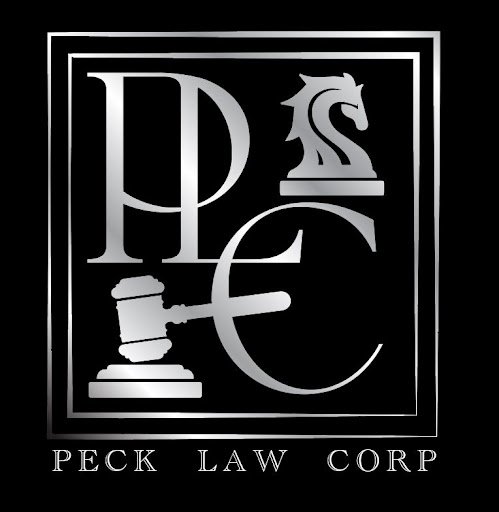
Bedsore Lawyer in Southern California
Experienced Bedsore Attorney Serving Southern California
At Peck Law Corporation, we understand the pain and suffering that bedsores can cause to victims and their families. Bedsores, also known as pressure ulcers, are a serious medical condition that often result from neglect or improper care in nursing homes, hospitals, and long-term care facilities. If you or a loved one has developed bedsores due to negligence, you need an experienced bedsore lawyer to fight for your rights and seek the justice you deserve. Our dedicated legal team serves clients throughout Southern California, helping victims hold negligent parties accountable for their actions.
What Are Bedsores and How Do They Occur?
Bedsores develop when sustained pressure restricts blood flow to the skin, leading to tissue damage. They commonly occur in individuals who are bedridden, wheelchair-bound, or have limited mobility. Without proper repositioning, hygiene, and medical attention, bedsores can progress through four stages, from mild redness to deep wounds exposing muscle and bone.
Common areas where bedsores form include:
Lower back (sacrum and tailbone)
Heels and ankles
Hips and buttocks
Shoulders and elbows
When caregivers fail to provide necessary preventive measures, bedsores can quickly worsen, resulting in severe pain, infections, and even fatal sepsis. As a dedicated bedsore lawyer, we help families pursue claims against negligent parties who failed in their duty of care.
Signs of Neglect Leading to Bedsores
Bedsores are almost always preventable with proper care. They are a sign that a nursing home, hospital, or caregiver has failed to uphold adequate patient care standards. Neglect leading to bedsores can include:
Failure to regularly reposition immobile patients
Inadequate monitoring and assessment of skin health
Poor hygiene and lack of proper wound care
Malnutrition and dehydration
Inattentiveness to pain and discomfort complaints
If you suspect that a loved one has suffered due to negligence, consulting an experienced bedsore attorney can help you understand your legal options and take appropriate action.
Legal Rights of Bedsore Victims in Southern California
Under California law, victims of nursing home abuse and medical negligence have the right to seek compensation for their injuries. A bedsore lawyer can assist in filing a lawsuit against responsible parties, including:
Hospitals and medical institutions
Home healthcare providers
Individual caregivers
Compensation in bedsore cases may include:
Medical expenses for treatment and rehabilitation
Pain and suffering damages
Emotional distress compensation
Wrongful death claims (if a loved one passed due to complications from bedsores)
At Peck Law Corporation, we have extensive experience in bedsore litigation and will fight for the justice your loved one deserves.
How Our Bedsore Attorneys Can Help
When you work with our bedsore lawyer team, we provide comprehensive legal support, including:
Case Evaluation – We assess the severity of the injuries and determine whether negligence occurred.
Gathering Evidence – We collect medical records, expert testimonies, and witness statements to build a strong case.
Negotiation & Litigation – We negotiate with insurance companies for fair settlements or take cases to court when necessary.
Personalized Legal Guidance – Every case is unique, and we provide tailored legal strategies to maximize compensation.
Our firm has successfully handled numerous bedsore lawsuits, helping families secure the compensation they need for recovery and justice.
We Operate on a Contingency Fee Basis
At Peck Law Corporation, we believe that every victim deserves access to quality legal representation without the burden of upfront costs. That’s why we handle all bedsore injury cases on a contingency fee basis. This means you don’t pay any legal fees unless we successfully recover compensation for you. Our commitment to justice ensures that financial constraints do not prevent victims from holding negligent parties accountable.
Areas We Serve in Southern California
Peck Law Corporation proudly represents clients throughout Southern California, including:
Los Angeles County
Orange County
Ventura County
San Diego County
Riverside County
No matter where you are located in Southern California, our experienced bedsore attorneys are ready to fight for your rights and provide the legal support you need.



Contact Peck Law Corporation for a Free Consultation
If you or a loved one has suffered from bedsores due to neglect or improper care, don’t wait to seek legal help. The sooner you take action, the stronger your case will be. At Peck Law Corporation, we are committed to advocating for victims and ensuring they receive the compensation they deserve.
Call us today for a free consultation to discuss your case and learn how we can help. Let our experienced bedsore lawyers in Southern California stand by your side and fight for justice. Contact Peck Law Corporation now to take the first step toward holding negligent parties accountable.
FAQs
-
A bedsore lawyer specializes in cases where individuals have suffered from pressure ulcers due to neglect or improper care. They help victims and their families seek compensation for medical expenses, pain and suffering, and other damages caused by negligent caregivers or institutions.
-
If you or a loved one developed bedsores while under the care of a hospital, nursing home, or caregiver, you may have a case. An experienced bedsore attorney can evaluate your situation, gather evidence, and determine if negligence played a role in the injuries.
-
In California, the statute of limitations for filing a medical negligence or personal injury lawsuit is typically two years from the date of injury. However, certain factors may extend or shorten this timeframe, so it’s best to consult a bedsore lawyer as soon as possible.
-
Negligence in a bedsore case can be proven by demonstrating that caregivers failed to reposition the patient, provide adequate medical attention, or maintain proper hygiene. Medical records, witness statements, and expert testimonies can all help establish liability.
